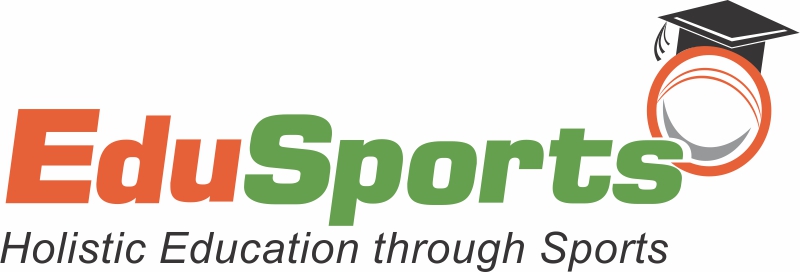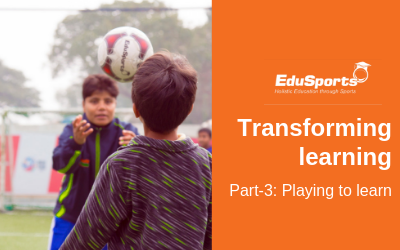“To succeed is to have failed” – learning from failures
Category: Uncategorized
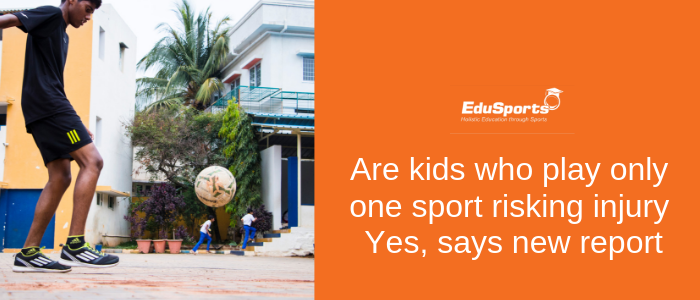
Are kids who play only one sport risking injury Yes, says new report
The American Academy of Pediatrics published https://pediatrics.aappublications.org/content/138/3/e20162148. One of the things it found was the danger of kids specializing in one sport, instead of playing several. It recommends that kids not specialize in one particular sport until age 15 or 16.
One of the biggest dangers of specializing early is overuse injuries. It’s estimated that as many as 46 percent to 50 percent of all athletic injuries are due to overuse, but that’s a hard thing to estimate because often sports injuries are not categorized.

Dr. Matthew Ellington is a pediatricorthopedic surgeon at Dell Children’s Medical Center of Central Texas, which was just ranked on of the top 50 hospitals for pediatricorthopedic surgery.
Dr. Matthew Ellington, a pediatricorthopedic surgeon at Dell Children’s Medical Center of Central Texas, says most of his patients are doing just one sport. And it might surprise you which athletes he sees the most. It’s not football, soccer or baseball. It’s dancing, gymnastics and cheerleading. The reason? Those athletes are practicing 15 hours a week and they might only get one day off. “It’s a lot of stress with no rest,” he says.
In dancing and cheerleading, it’s knee injuries. Gymnastics, it’s wrists. We’ve actually written about girls and knee injuries before. That study found that girls were 2.5 to 6.2 times more likely to have an anterior cruciate ligament injury than boys. Some of it is physiological differences in the way boys’ and girls’ bodies are made, but a big factor is the number of hours that are being dedicated to that sport.
Ellington does see plenty of boys as well as non dancers, cheerleaders and gymnasts.
In baseball players, it’s elbows. In basketball, soccer and volleyball players, it’s knees. He doesn’t see as many football players with these types of injuries, he says, mainly because football is one season. However, as kids have started to play flag football in the spring, he is seeing some.
A lot of the injuries are happening during puberty when the skeleton is growing faster than the muscles and ligaments an catch up, Ellington says. Their bodies were meant to have a variety of activities and not endure the same moves over and over again. Remember when kids just went out and played?
The recommendation is that kids get at least three months a year where they are not participating in the one sport. Those three months don’t have to happen all at once, but can be three months on, one month off.
Ellington also recommends at least two to three days off a week, except for stretching. He’d like to kids to do that twice a day.
When kids do have an injury, they have to let their bodies rest and not try to push their way back onto the field or gym floor. And parents have to listen to the doctor and let their child rest.
Parents also need to act when their kids are in pain and not let them “shake it off.” They can also attend practices and make sure that kids are doing stretching and strength training and not just hard-pounding exercise. And, of course, they can make sure that kids are involved in a variety of sports and take time off.
The American Academy of Pediatrics recommends that doctors use these talking points based on the report’s findings:
The primary focus of sports for young athletes should be to have fun and learn lifelong physical activity skills. Participating in multiple sports, at least until puberty, decreases the chances of injuries, stress and burnout in young athletes. For most sports, specializing in a sport later (ie, late adolescence) may lead to a higher chance of the young athlete accomplishing his or her athletic goals. Early diversification and later specialization provides for a greater chance of lifetime sports involvement, lifetime physical fitness and possibly elite participation. If a young athlete has decided to specialize in a single sport, discussing his or her goals to determine whether they are appropriate and realistic is important. This discussion may involve helping the young athlete distinguish these goals from those of the parents and/or coaches. It is important for parents to closely monitor the training and coaching environment of “elite” youth sports programs and be aware of best practices for their children’s sports. Having at least a total of three months off throughout the year, in increments of one month, from their particular sport of interest will allow for athletes’ physical and psychological recovery. Young athletes can still remain active in other activities to meet physical activity guidelines during the time off. Young athletes having at least one to two days off per week from their particular sport of interest can decrease the chance for injuries. Closely monitoring young athletes who pursue intensive training for physical and psychological growth and maturation as well as nutritional status is an important parameter for health and well-being. The U.S. Olympic Committee, along with National Governing Bodies, created five stages of age-appropriate sports activity for any sport: Discover, learn and play (ages 0–12 years) Develop and challenge (ages 10–16 years) Train and compete (ages 13–19 years) Excel for high performance or participate and succeed (ages ≥15 years) Mentor and thrive (for Life) So, yes, keep your kids active, just make sure they rest and do a variety of different activities. (This Blog is published in Austin360, dated 23 September 2016. The content of this blog does not reflect the official opinion of EduSports.)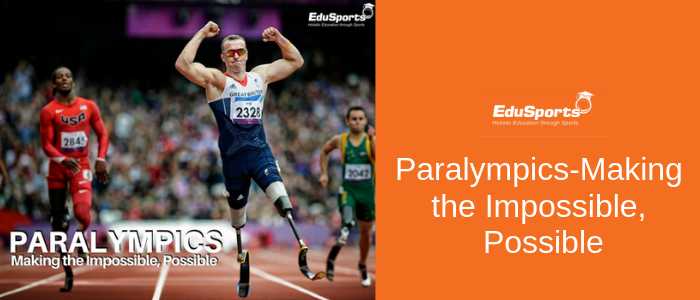
Paralympics-Making the Impossible, Possible
The Rio Olympics concluded with its closing ceremony marked by color, music and rain. Many new records were made and new victory styles were created but the most memorable moment was Japan’s Prime Minister Shinzō Abe emerging from a warp pipe dressed as Super Mario and announcing the next Olympics in Tokyo, in 2020.
But it’s not a wrap yet till we conclude the Paralympics- sports for the athletes with impairment.
A History Rundown
The word “Paralympic” derives from the Greek preposition “para” (beside or alongside) and the word “Olympic”. The concept was devised by Sir Ludwig Guttmann, an English neurosurgeon, in 1948 to provide athletic therapy for people in wheelchairs comprising of war veterans and injured civilians. Guttman recognized the value of recreation and sport as a catalyst for rehabilitation therapy and named it Stoke Mandeville Games.
However, it was not until after World War II, that it was widely introduced and the first Paralympic Games were held in 1960 in Rome, Italy.
The first Summer Games of the modern Paralympic era were held in Seoul, South Korea in 1988. With 10,000 attendees, 700 wheel chair dancers and performers, over 950 world records were set. The first winter Games took place in France in 1992. Since then, both Summer and Winter Paralympic Games are held exactly two weeks after the Olympic Games in the same arenas, same tracks and same village.
How did it all shape up?
After the initial identity struggle, the Paralympic Games slowly carved out its own presence with the Agitos- the three swoops in red, green and blue that represent the Paralympic motto “spirit in motion” (instead of the Olympic rings) to inclusion of sports unique to Paralympics like Boccia and Goalball.
The participating athletes produced many iconic heroes with each season, from Trisha Zorn, USA- the most successful Paralympic swimmer with 55 medals (41 gold) to the most recent Paralympic superhero David Weir from UK who won 6 Olympic golds in wheelchair racing in 2008 and 2012. Nicknamed Weirwolf, David said, “It is no longer about disability – it’s about great athletes and great sporting events.” And rightly so because The para- athletes are as agile and performance driven as the Olympic athletes and their sports creates the same euphoria amongst the audience too. Some of the noteworthy sports with a twist are:
Goalball- This game is played by visually impaired athletes, who use blackout masksto ensure equality. Goalball was designed specifically for visually impaired athletes rather than being adapted from an Olympic sport.
Tappers: Standing at each end of the pool, the tapper is a person holding a long pole with a soft circular ball on the end to tap the swimmer as he approaches to indicate that he can move at full pelt without fearing a painful crash at the end.
Guide runners: Blind and partially sighted runners can compete with a guide. Usually tethered to the athlete by a rope, a guide runs with them, acting as their eyes.
India and Paralympic Connection
While we all extol Abhinav Bindra for his gold medal in Beijing, 2008, little do we know about MurlikantPetkar, who had won a gold in 50m freestyle swimming in 1972 Germany Paralympics or Devendra Jhajharia who had won a gold in 2004 Athens Paralympics in the javelin throw event. Devendra is an amputee who set a world record in 2004 which is unbeaten even today and is now gunning for Rio Paralympics.
For the 2016 Summer Paralympic, Indian contingent comprises of 17 participants, slated to be held from 7-18 September in Rio. We have pinned high hopes on our athletes like Ankur Dhama- in 1500 race as a blind athlete, Deepa Malik- in wheelchair shot put, Devendra- in javelin throw and a handful more.
But these para- athletes are already winners in our eyes, fighting against all odds, testing their absolute limits, defying stereotypes and transforming attitudes of the society by breaking down the social barriers and discrimination towards people with impairments. And it does not come easy to them as there aren’t significant facilities for training despite consistent good performances. They also do not get as lucky as the able- bodied athletes in getting jobs, financial- backings or sponsors.
That the Indian para-athletes managed to win 33 medals with 3 golds at the Incheon Para Asian Games, 2014 despite infrastructural and financial problems says enough about their resilience!
Hopes against all odds?
Hopeful promoters like GoSports Foundation are conducting programs and conclaves aimed at improving the sporting ecosystem in India and providing scholarships. Sports icons and stalwarts like Abhinav Bindra, Rahul Dravid and Pullela Gopichand are members of the advisory board of GoSports Foundation. Also, organizations like EduSports have come up in the last few years to bring in a fresh wave of hope- working at the grassroots level to build sports culture among school going children. With age- appropriate Sports and Physical Education curriculum and programs like Adapted Physical Activity (APA) for students with special education needs, EduSports is sowing the seeds of sports culture in Indian schools.
However we definitely need more organizations like GoSports and EduSports to turn the medal tallies around and more importantly to establish the importance and respect that sports deserves.
How does it fare today?
Today the Paralympic Games is one of the largest events in the world for para- athletes with participation spanning 160 countries. More than 4,200 athletes competed in 20 sports at the last concluded London 2012 Games outshining Commonwealth Games’ participation.
Stephen Hawking, the renowned Physicist with ALS said, “Each one has within us the spark of fire, a creative touch,” at the opening ceremony of Barcelona games, 1992. The showcase of world’s elite para- athletes in Rio will soon start with that spark turning it into spectacular firework to be witnessed and cherished forever.
To the incredible and insurmountable para- athletes- let the games begin!
Bibliography
British Paralympians 1960-2014. Available from: https://paralympics.org.uk/games/british-paralympians[Accessed 2 Sept, 2016] David Weir, Paralympic Superhuman. (2012). Available from:https://www.nhs.uk/Livewell/fitness/Pages/david-weir-paralympics.aspx[Accessed 2 Sept, 2016] History of the Paralympics. (2004). Available from:https://news.bbc.co.uk/sport2/hi/other_sports/disability_sport/3628745.stm[Accessed 1 Sept, 2016] Indian Express (2016). Available from:https://indianexpress.com/sports/rio-2016-olympics/expectations-high-from-rio-bound-indian-paralympic-contingent-2972878/ [Accessed 31 Aug, 2016] paralympiceducation.org.au History of the games. Available from: https://www.paralympiceducation.org.au/primary/history-games [Accessed 31 Aug, 2016] Medal Quest- American Athletes and the Paralympic Games. Available from: https://www.pbs.org/wgbh/medal-quest/past-games/ [Accessed 31 Aug, 2016] Pal. S. The Better India- Chasing the gold. (2016) Available from: https://www.thebetterindia.com/66395/blind-ankur-dhama-rio-para-olympics/ [Accessed 1 Sept, 2016] Paralympics- History of the Movement. Available from:https://www.paralympic.org/the-ipc/history-of-the-movement [Accessed 31 Aug, 2016] Paralympics: 10 things you need to know. (2012). Available from:https://www.bbc.com/news/magazine-19341500 [Accessed 1 Sept, 2016] Telegraph. (2016). Available from:https://www.telegraph.co.uk/news/2016/05/29/david-weir-makes-history-as-he-becomes-first-wheelchair-racer-to/ [Accessed 2 Sept, 2016] The History of the Paralympic Movement. Available from: https://www.insidethegames.biz/history/paralympics/the-paralympic-movement [Accessed 1 Sept, 2016]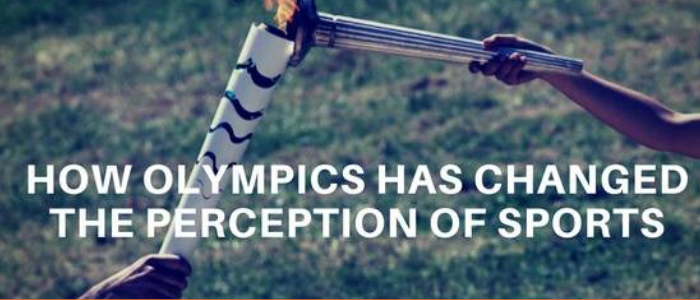
How Olympics has changed the perception of sports
For centuries, people have come together to compete with each other and have vied for titles of the fastest man/ woman, greatest athlete, etc. This international event which started as a religious event and eventually established itself as the “coming together of the world” is known as the Olympic Games.
From ancient to modern: The journey of the Olympic Games
The beginning: The Olympic Games started in 776 B.C. in ancient Greece, dedicated to Zeus – the king of gods, with limited participation from freeborn male citizens of the country. There were no events for women, slaves and vandals of religious properties were prohibited from attending the competition. The winners were welcomed as champions, bringing honour and esteem to their town.
The end and the revival: After the Roman Empire conquered Greece in the 2nd century, Emperor Theodosius I seized power and banned all “pagan” festivals, thus closing the 12 centuries of Olympics’ chapters. But the archaeological discovery of the temple of Zeus followed by the Greece War of Independence (1821-1829) led to the revival of the Olympic Games.The first modern Olympic Games took place in 1896 in Athens with a participation of 13 nations and around 280 sportsmen.
Olympics as the bearer of hope
The 2012 Summer Olympics in London witnessed participation by more than 10,000 athletes from over 200 countries; 4 billion people watched the opening ceremony on television and another 20 million people visited the city generating approximately $14 billion for the country. The 2016 Rio Olympics promises bigger and better numbers!
For those of us who are waiting to witness the Rio Olympic cauldron being lit amidst myriads of spectators during the opening ceremony, it is also perfect timing to reflect on the current state of sports and the Olympics.
Vision, Mission and Values: From the very beginning, Olympics held a very important vision and mission to contribute to building a better world and educating youth through sports. The three Olympic values hold true even for the last sportsman standing – striving for excellence, demonstrating respect and celebrating friendship.
This showcase of peaceful rivalry between nations through sport competitions rewarded us with many touching moments of hope and peace. The historic photo of John Carlos and Tommie Smith, two medal winning men of colour, with their black-gloved fists in the air, was a strong symbolic gesture for African American civil rights in 1968, Mexico. When Cathy Freeman, an Australian Aborigine, won the 400m race in front of a jubilant home crowd in 2000, Sydney, many historians saw it as a symbol of reconciliation with Australia’s native people.
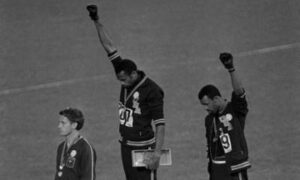
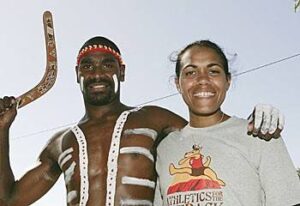
However, Olympics were also being hijacked for more dubious political ends. Munich, 1972 was the most tragic moment in Olympic history when eight Palestinian militants broke into the Olympic Village and killed eleven Israeli athletes.
Off late the news and controversies around illegal enhancement drugs are blotches which further tarnish sports’ image and discourage aspiring sportspersons. Such unsportsmanlike behavior of sportspersons should be checked.
Olympics and India: The On-Off relationship
The Indian medals tally: In Athens 2004 the Indian contingent brought home one silver which progressed to three medals in Beijing 2008 and to six medals in London 2012. Since 1928, India has won overall 24 medals, with hockey contributing 11 to that tally. In fact India is the only country in the world which has not matched its economic clout with sporting success.
The hurdle race: The stunted progress in sports is often attributed to lack of adequate funds, infrastructure and sponsorship; political intervention and unwillingness of sports authorities to provide adequate training sessions are additional hurdles to success.
But the fundamental problem lies in the non-sporting culture that we grow up in, where parents and teachers equally discourage their children’s interest in sports. We are a die-hard sporting nation but only to a selective sport – cricket. Athletics, fencing, equestrian competitions etc. do not even surface in conversations, leaving behind many potential sportspersons untapped.
The sporting culture: The gargantuan task to establish the sporting culture should start at the school level with schools including Sports and Physical Education as an integral part of the curriculum. Organizations, for e.g., EduSports, have been collaborating with schools to provide age – appropriate Sports and Physical Education curriculum, proved to be a boon for the children and schools. The holistic approach of such a curriculum with regular assessments by EduSports’ coaches is guiding students to develop interest in specific sports while cultivating sportsmanship qualities. Kudos to EduSports for pioneering and leading the sporting culture in India, working at the grass root level and inspiring many schools and organizations alike.
With things slowly turning positive in the fields of tennis, boxing, badminton, archery, Indian representatives are trying hard to find their ground. Sponsorships, media publicity, rewards and recognitions by governments to medal winning performances could act as morale boosters to these emerging champions. After all, despite many hurdles and hiccups, Abhinav Bindra, Sushil Kumar, SainaNehwal and a handful more have created history in Olympics. Indian contingent, with due support can certainly turn the medal chart around with some dazzling athletic achievements and a few feel-good stories to tell.
Let the Games begin
Professional sport is a spectacle and the Olympic Games provide the best stage to perform. From the torch relay and opulent opening ceremony to the spectacular closing ceremony, the audience is captivated by the display of art and culture of the host nation and incredible performances shown by the athletes. With few days remaining for the opening ceremony, let us gear up to support the athletes as they vie to clench the gold, silver and the bronze; let us support the spirit of sports and cheer for the winners and the participants with equal zest.
Bibliography:
Cartwright M. (2013) Olympic Games . Available from: https://www.ancient.eu/Olympic_Games/ [Accessed 28 July 2016]. History.com. Available from: https://www.history.com/topics/olympic-games [Accessed 28 July 2016]. Ghosh R. (2012) India’s 112 years at Olympics- A saga of hope and gloom. Available from: https://www.dnaindia.com/india/report-india-s-112-years-at-olympics-a-saga-of-hope-and-gloom-1727675 [Accessed 29 July 2016]. Kaur R. (2014) Why the performance of India is so poor in Olympics? Available from:https://www.mapsofindia.com/my-india/india/why-the-performance-of-india-is-so-poor-in-olympics [Accessed 28 July 2016]. Pettinger T. (2009) Costs and benefits of the Olympics. Available from: https://www.economicshelp.org/blog/29/sport/costs-and-benefits-of-the-olympics/ [Accessed 27 July 2016]. Realtruth.org. The Olympics- What the games have taught us. Available from:https://realtruth.org/articles/255-towtghtu.html [Accessed 29 July 2016]. Sibilski L. (2016) Is sport inhumane? Available from: https://blogs.worldbank.org/publicsphere/sport-inhumane [Accessed 27 July 2016]. Whipps H. (2012) How the Olympics changed the world. Available from: https://www.livescience.com/2733-olympics-changed-world.html [Accessed 28 July 2016].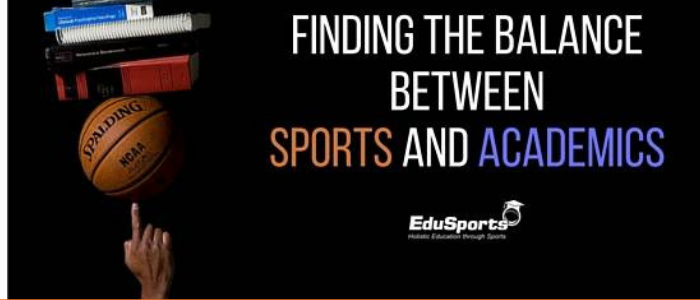
Finding the balance between sports and academics
Rohan threw his school bag on his bed, freshened up and grabbed an apple, lifted his cricket kit and stormed out in a hurry. This took a total of 10 minutes while his mom parked the car and was catching up with the friend next-door.
“Keep drinking water, play well and come back as soon as the practice……..” The elevator shut by the time she could complete her instruction.
This was a daily drill for Rohan and he shook his head while battling with a series of emotions.
Rohan says:
My parents are great, but why do they always tell me what to do? It stresses me out. Why does mom keep a tab on every minute of mine? She is over-scheduling me though I know that she wants me to focus on studies too. It is like I’m never quite good enough; I can’t fully please my parents, either in sports or studies. Rohan’s mom has her own set of thoughts:
By the time he is home, he will again be too tired to finish his homework.
What if he doesn’t turn out to be a good sports person and lags behind in studies too?
I hope he understands one day, that I am doing this for his own good! Many children (and parents) go through similar emotional turmoil on a daily basis while trying to balance studies and sports. Chasing school project deadlines, finishing home – work and keeping up with studies are the most strenuous forms of exercises that many students engage in while passionately honing their sports skills. “The mind wanders when doing essays, but if you develop a focus and use your time efficiently then it’s a very transferable skill,” says Stephen Baddley, Director of sport at the University of Bath. It had boasted 25 student competitors in 2014 Commonwealth Games. (Trivia: If Bath University was a country, it would have ranked 11th overall in the same year).
There are many research findings which highlight that children dabbling with both sports and academics are better focused, as discipline, concentration, and time- management learnt through sports come handy. A research study conducted on Slovak athletes, strived to gain an understanding of the athletes’ attitudes towards education as well as perceived difficulties and supporting elements in pursuing dual career. The athletes experienced dual career as manageable as long as they were assisted, were provided with flexible arrangements and were supported by parents and peers (Geraniosova et al., 2014).
Giving Physical Education and Sports the requisite weightage in the school curriculum is not an easy task and the stakeholders (school principals, parents etc.) take time to accept sports at par with academics for their children. Often, having students involved in extracurricular activities like sports can pose a catch-22 situation as the benefits of sports for students comes with the demand for their time, thus sacrificing the time meant for “academic rituals.” Finding a balance between sports and academics is essential for the modern student, and our EduSports’ programs and coaches along with the teachers and parents can play a pivotal role in providing the required support.
Varsha Varman, a member of the Indian Shooting Team is gunning for the Olympics while balancing her academics at the prestigious Harvard University and she vouches that studies and sports go together for her. “I have found that I perform better when challenged to my maximum, and that comes through pushing myself in both Sports and Academics,” says Varsha. She acknowledges that her alma mater, St. Joseph’s Co-Ed School, Bhopal, played a great role in identifying her field of interest and shaping up her goals. Varsha Varman is one such emerging champion who has found her balance!
The balancing act:
By introducing and implementing time-saving tips and their staunch support, parents, coaches and teachers can aid in finding the balance, not only in school and on the playing field, but in life.
Help them to prioritize: As with everything else in life, help the child to first make a list of her priorities. If her interest in sports is as strong as her interest in academics, then establish that she would have to give up on watching her favorite TV program and other things so that she has ample time to complete her homework and her academics do not take a backseat. For e.g., if there’s a test tomorrow and this afternoon’s team practice isn’t critical, may be that extra time can be utilized to study. However, if there’s an important athletic event the next day, studying can be postponed for the following night.
Help them in planning: Guide your child to get a grip on his time table or course schedule and help him answer the questions as he plans: How many hours will you need to finish your task?
Can you catch up with studies during breaks or while travelling?
Will you have enough free time to participate in other activities?There are some useful tools like a hard copy Planner or time management app to help him map out his sports and study schedule. Communicate and engage with them: While maintaining the importance of sports, help your child to develop positive attitudes toward school and learning. Talking and listening play major roles in children’s school and sports success. Allow them to believe that they have a scope to commit mistakes and praise them when they deserve it; it will keep him motivated. Help your child answer questions that invariably bothers him:
How much is too much? Have I set high standards of achievement or am I setting unreasonable expectations?
What should I enroll for and still balance academics and extra-curricular activities?
Watch out for the warning signs: Sometimes balancing sports and academics becomes too difficult for the children even if they are willing to stretch themselves. Encourage them to take breaks, from both studies and sports as it is also important for children to have unstructured time to just be kids. Get alerted and save the children from burn- outs if you come across signs such as: Sudden drop in grades.
Lack of motivation or poor attitude in the sport. Making excuses to skip practice or school. Physical illness when it’s time to participate in the sport. At their core, sports are fun for children but if the children stop having fun, it’s time to re-evaluate whether they should consider a new sport or stop altogether.
Striking the right balance between academics and sports can be a thorn in the flesh and would require a team approach to achieve it. With the right help, guidance and communication from all parties involved, children can benefit from playing a sport, while still enjoying a quality academic experience by prioritizing their interests and steering their lives in the right direction.
If there were to be a competition between sports and academics, one would acquire organizational skills worthy of any professional manager through sports while academics would help in shaping up the fundamentals of one’s lifelong knowledge base.
Balancing sports and academics is difficult, but it is possible. And it is worth it! After all, one should rather look back and say, “I can’t believe I did that” instead of saying, “I wish my life had interesting stories to tell.”
#LetTheChildrenPlay #SportIsEducation #PhysicalEducation #HolisticEducation
Bibliography:
Carlyle R. (2014). Best Start https://www.express.co.uk/life-style/life/502358/Tips-for-helping-children-through-school [Accessed 13 June 2016]. Colorincolorado.org: https://www.colorincolorado.org/article/twenty-ways-you-can-help-your-children-succeed-school [Accessed 13 June 2016]. Geraniosova K., Ronkainen N. (2014). The Experience of Dual Career through Slovak Athletes’ Eyes. Available from: https://www.degruyter.com/view/j/pcssr.2015.66.issue-1/pcssr-2015-0005/pcssr-2015-0005.pdf [Accessed 20 June 2016]. Gil N. (2014). Do athletes make better Students? Available from: https://www.theguardian.com/education/2014/aug/04/sport-at-university-do-athletes-make-better-students [Accessed 13 June 2016]. Goodes J. (2014). Tips for helping teens balance school and sport. https://breakingmuscle.com/family-kids/tips-for-helping-teens-balance-school-and-sport [Accessed 19 June 2016]. Greatschools.org (2016). 5 ways to help your child focus. https://www.greatschools.org/gk/articles/helping-kids-focus/ [Accessed 13 June 2016]. Healthline.com (2013). What’s a healthy balance between school and sports? https://www.healthline.com/health/whats-healthy-balance-between-school-and-sports# [Accessed 20 June 2016].
Dear Parents, you are special too!
Dear Parents,
You are special!
I don’t know you personally but I know you through your child. I know that you have a hidden source of strength and optimism that keeps you going. While I can always move to more comfortable turfs, you do not have that choice; you are a parent- to a special child and you are doing a great job at that. Please read this through because I owe this to you.
I am a Resident with EduSports and I specialize in providing Physical Education training to school children. I will not get into the discussion of the role of Physical Education in children’s lives in developing their health and wellness. Several research studies and our 7 years’ of efforts towards holistic education through Physical Education have already established the role. Here, I want to speak up for the special children and the impact physical activity can have in their lives.
Three years back, EduSports took the onus of making a difference to special children and therefore, partnered with Lalaji Memorial Omega International School (LMOIS), Chennai. LMOIS, with over 100 special children, is keen on creating sports interventions, specially crafted for them and thus EduSports created a program called Adapted Physical Activity (APA) for students with special education needs, studying in LMOIS. And it is from here that this special journey began…
As per LMOIS’ categorization, the special children enrolled with the school, faced difficulties like Attention Deficit Hyperactive Deficit (ADHD), weak muscle tone, poor hand-eye coordination and feeble spatial awareness. EduSports’ APA program is designed to address these difficulties. Through this program, children were introduced to innovative physical activities at the beginning of each day and we monitored their progress over a period of time. We started using specialized props in these special activities which aided in reducing the children’s difficulties across many areas like attention span, slow learning, crossing the midline, spatial sense, hand- eye coordination etc.
Some of my personal favorite activities, which most of the children enjoyed practicing, are:
“Egg roll” over the gym mat- improving muscle tone “Ball/ bean bag juggling”- enhancing hand- eye coordination “Color sequence” activity- improving sequential memory by reproducing the sequence of colors observed. “Structured walking/ running”- improving locomotor and balancing skills. Please have a look at the smiling and giggling faces when we play.
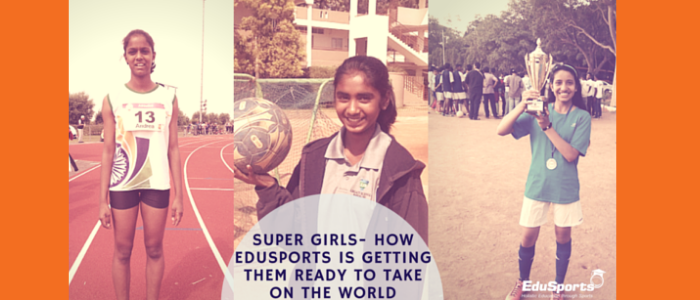
Super Girls – How EduSports is getting them ready to take on the world
All of us face challenges when it comes to goal setting and planning for success. We might overestimate our own strength, or even worse, we might undermine our true potential. Hence, as adults, we seek guidance and expertise in certain areas of goal setting and working on a plan to achieve what we aim for. We are a part of the vast majority of adults who fail year-on-year to stick to the goals that we set for ourselves.
However, children associated with EduSports have a completely different story!
There is no denying that young people’s potential is limitless and sport inspires them not just with dreams of becoming an athlete but by equipping them with life-changing skills. Thanks to a healthy mix of their undying spirit, optimism and guidance delivered by EduSports in providing Physical Education and sports curriculum to school children, there are many success stories of school-girls around us. Most girls who are involved in the Physical Education curriculum are helped with their goal settings and one such rising star is Andrea Pinto, a grade X student studying in Legacy School, Bangalore. It was during one of the early EduSports curriculum that Andrea showed an interest towards athletics. She has now moved to a specialist training program but has fresh memories of how EduSports activities supplemented her ongoing training while she was a part of it.
Andrea’s parents are proud that sports has made a very positive impact on her. It has helped her learn time management, made her disciplined, focused and resilient. She already has many laurels in her kitty, like representing the state of Karnataka and has received the prestigious opportunity to represent Bangalore at the International Children’s Games held at Alkamaar, Netherlands in June, 2015. But she has had her share of challenges too, the biggest one being striking a balance between sports and academics. Her focus and our guidance in her goal-setting have helped her sail through. “Now, the only time it gets a little challenging is during my exams but otherwise it’s fine,” says Andrea.
Not all girls are lucky to have parents like Andrea’s who support their children to participate in sports. A recent EduSports study indicates that over 75% of school children in the country stop participating in any organized sport or physical activity by the time they enter middle-school or adolescent years. The data also shows that dropout % are higher for pre-teen and adolescent girls, even though global participation of young women in sports is increasing. Here at EduSports, we have observed that there are three main factors that inhibit the participation of girls in sports:
Gender bias: where a boy who plays is considered athletic while a girl is termed as a ‘tomboy’. Social conditioning: where girls in the home surroundings are not proactively included in sports conversations or celebrations. Inadequate sporting skills: which lead to poor participation levels due to lack in learning of fundamental sports skills. Through its age & skill appropriate in-school sports & PE program, EduSports has helped various schools in promoting girls’ inclusion in sports. Over the last 7 years, EduSports has helped over 1.5 lakh school girls experience the magic of sports and one such sensation is Aashna Francis, an ardent sports person. She has represented her school’s football, basketball and athletics teams and has been recently awarded at the all India international schools sports meet in Pune for her achievements. She beams with pride recollecting her feat in rock climbing, in which she was recognized as the best promising climber at a climbing competition hosted by XLR8. When asked if she benefited from the EduSports program, Aashna candidly says, “EduSports program has helped me improve my skills and the training has helped me strengthen my core, which is extremely important as an athlete. The fitness and skill assessments have pushed me to challenge myself and improve my timings and results in various tests.” Aashna has set herself some goals and she is confident of achieving those because sports has taught her to believe in herself and never give up.
While she continues her chase for excellence, the coaches at EduSports continuously monitor the progress of children like Aashna who are making large strides towards their goals. If an athlete is making great headway, we let them know how well they are doing. If, however an aspiring athlete is struggling, we find out ways to work with them in order for them to cope with the struggles and witness their progress. Our assessments are not to highlight a few stars but to help others achieve what they think are unfathomable and make them shine too.
It really doesn’t matter if a goal seems unrealistic or outside-the-box as long as children focus on why they want to achieve it. Our residents help budding sports persons reflect on the reason behind indentifying a goal because if they are able to explain why they chose it; they will develop a deeper connection to the goal, which will strengthen their resolve to succeed. Raquel Rodericks is one such sports person who has a vision now.
Raquel started out as a football enthusiast in her school and is currently the School Sports Captain serving the sporting needs of the student body. From participating with her team at Legacy School to winning at various intra and inter-school sporting events to a nationwide international schools’ sports meet in Pune, Raquel is living her dream. She has had her share of woes trying to balance sports and academics but she sailed through with the support from her parents, school and guidance from EduSports residents. She stated that “Yes, I have been through EduSports program and my experiences with the coaches from EduSports are truly appreciable, especially Regin Sir. He has supported and encouraged our Girls Football team constantly and helped us work better as a team and built our confidence.”
And she does not limit herself here. Her dream is to start a girls’ football team and to propagate girls’ football in India. “I personally aspire to better myself at all sports as it is a very significant part of my life,” says a confident Rodericks. Such a powerful statement coming from a girl only establishes the belief further that a perfect accomplishment is one thing, but the true value of sports lies in achieving the goals set and determining a plan for success where one can give back to the society.It will not be far-fetched to say that girls like Andrea, Aashna, Raquel and many others in making with their fortitude will take on the sporting world by storm. Here at EduSports, we are proudly shaping up these mini-avalanches to conquer the world. It is only a matter of time now…
Bibliography:
Gowri D. (2016). Play while you learn. Deccan Chronicle, Tiruchy Edition. Available from: https://epaper.deccanchronicle.com/articledetailpage.aspx?id=4986369 [Accessed 15 March 2016]. Sports for Jack and Jill [Internet]. EduSports.in. Available from: https://edusports.in/index.php/blog/entry/edusports-blogs-sports-for-jack-and-jill [Accessed 04 April 2016]. Pellegrini, A. D., and Gustafson, K. (2005). Boys’ and girls’ uses of objects for exploration, play and tools in early childhood. The nature of play: Great apes and humans.(pp. 113-135). New York: Guilford TNN (2016). Tech overdoses making city kids unfit: survey. Times of India, Chennai Edition. Available from: https://timesofindia.indiatimes.com/city/chennai/Tech-overdoes-making-city-kids-unfit-Survey/articleshow/50884627.cms [Accessed 7 February 2016]. Boon N (2016) Goal setting or the young athlete. [Internet] Available from: https://stevenashyb.wordpress.com/2016/01/15/goal-setting-for-the-young-athlete/#more-2406[Accessed 4 April 2016]. Mcdonnel S. (2015) The value of sport. [Internet]OneYoungWorld.com. Available from: https://www.oneyoungworld.com/blog/value-of-sport [Accessed 01 April 2016].